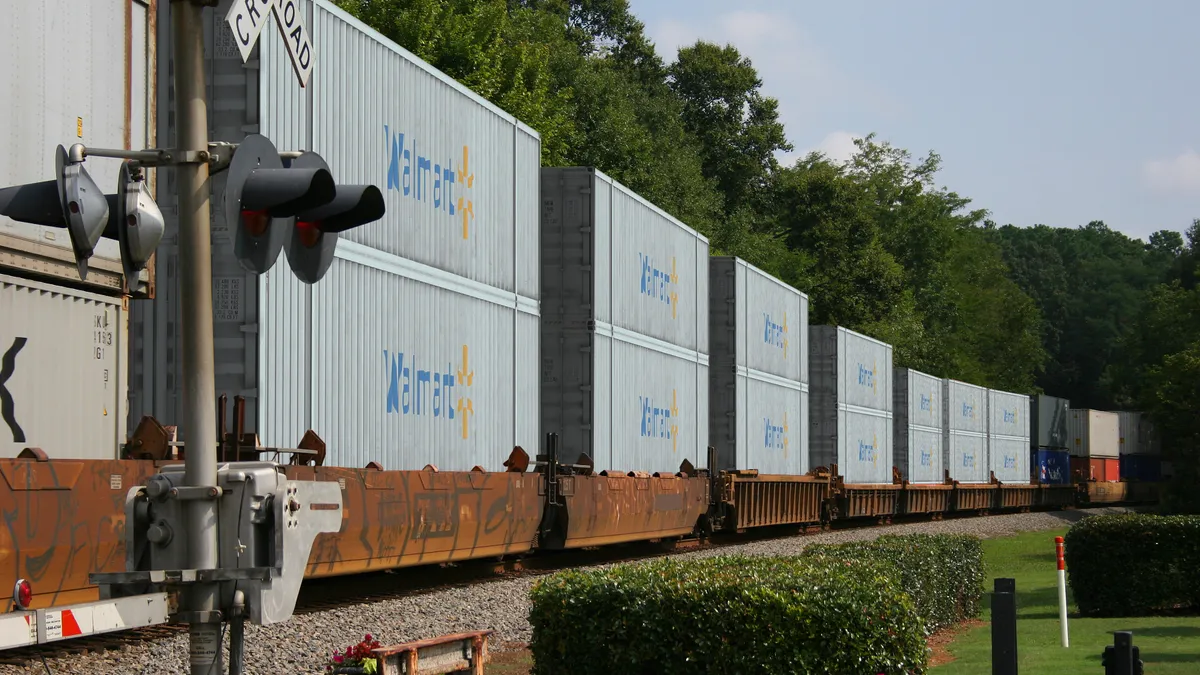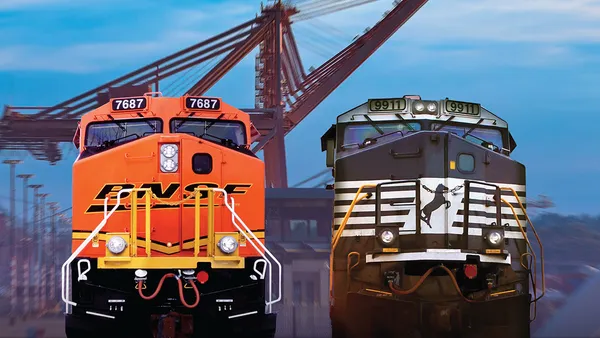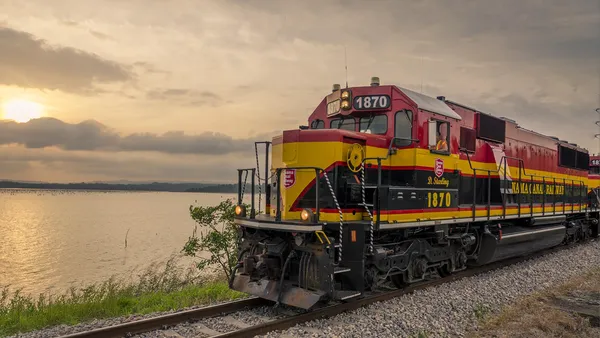Dive Brief:
- Walmart has launched its own fleet of intermodal containers and begun using its own drivers to move containers from rail hubs to Walmart stores, VP of Inbound Logistics Ken Braunbach told Supply Chain Dive in an interview.
- The pilot began in the summer of 2018 and has covered some loads coming out of Southern California. Braunbach could not confirm the number of containers, nor how large the program is likely to become, but described the capacity added to Walmart's network as "supplemental."
- The new container, designed internally at Walmart, include chassis and doublestacking capability along with a roll-up door, which allows for more flexibility in unloading at stores. "We wanted to have that flexibility, which no other container provides," said Braunbach.
Dive Insight:
Braunbach emphasized Walmart is far from causing a significant change in its freight needs, but has been pleasantly surprised by the extra efficiency gained by taking more control of intermodal loads.
"Everything is going, frankly, better than planned," said Braunbach.
The retailer determined its daycab trucks, a minority in its fleet of 8,000 vehicles, were a good fit for drayage. Taking over this part of the chain from 3PLs has saved hours or even days of transit time for each container. For a load traveling from Southern California to South Florida, the time saved can be two to three days. This can be a big plus during peak season when inventory levels need to be finely tuned to keep items in stock while inventory churn is at its height.
Using Walmart fleet drivers for drayage also improves efficiency for loads with longer distances between the rail hub and the store, which intermodal networks "shy away from," Braunbach said.
Taking control of containers directly from railroads is also saving time. Class I railroads continue a slow march toward precision scheduled rail (PSR), which can make for fewer options and less flexibility, but often greater reliability for shippers.
"As they get better and in some cases, not as flexible, we want to have control over our entire supply chain," Braunbach said. With the new scheme, Braunbach's team can prioritize each load to meet the train departure schedule exactly since the uncertainty of using a 3PL is removed from the equation.
Braunbach said the response from railroads has been mixed, but largely positive, adding that the scheme may allow Walmart to utilize more rail in its freight mix.
Correction: In an earlier version of this story, Walmart misstated the designer of the custom container.















